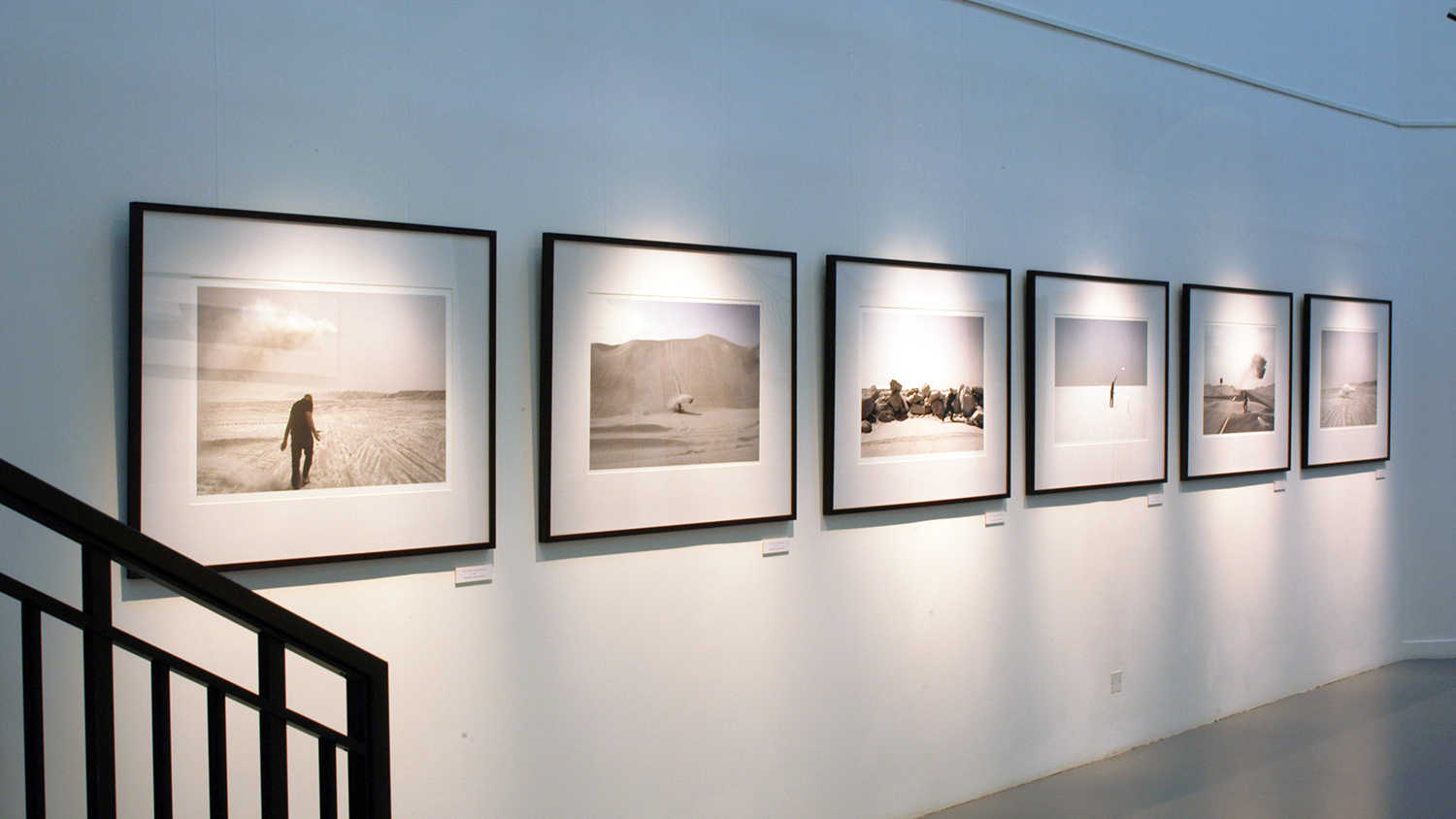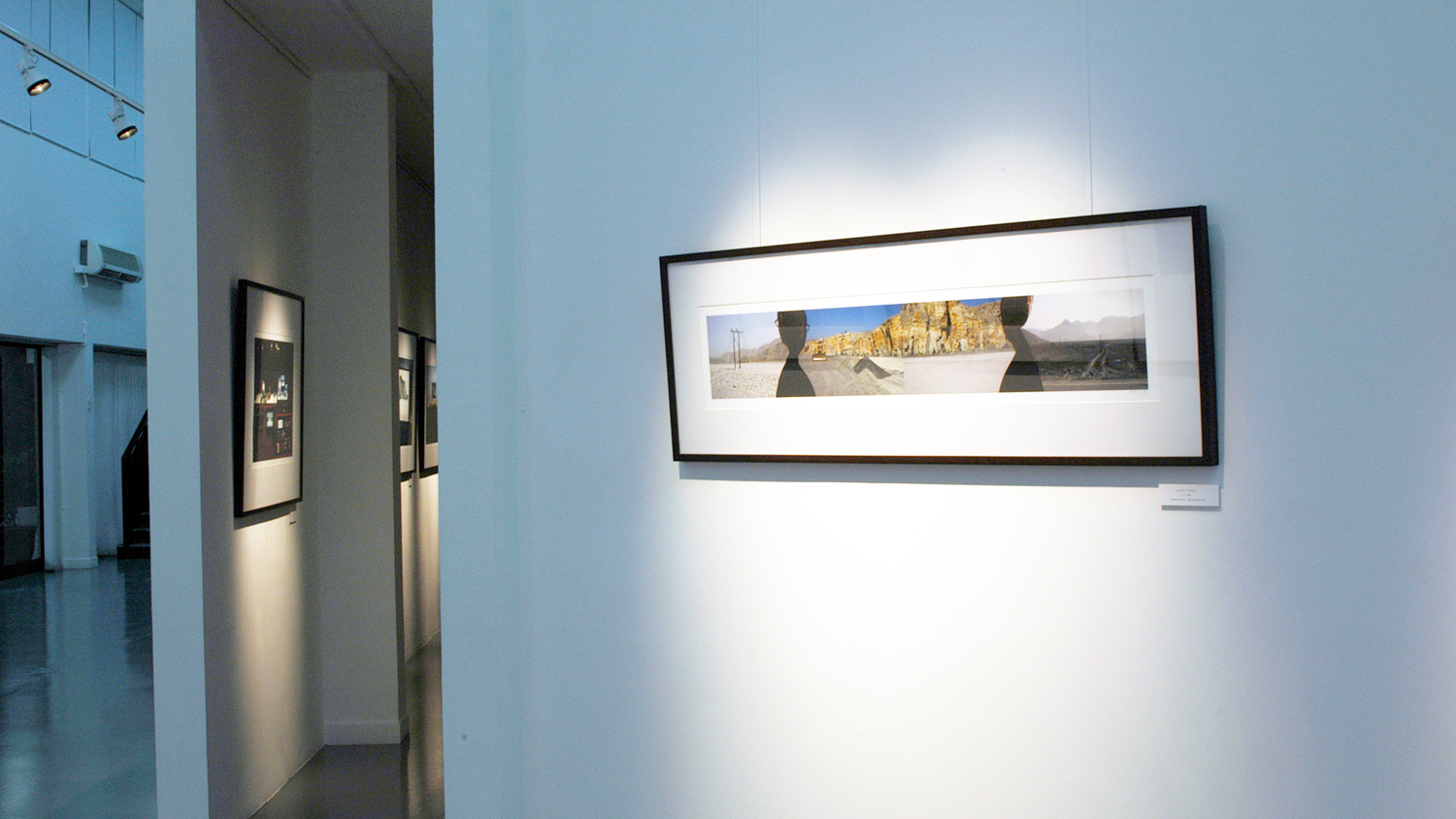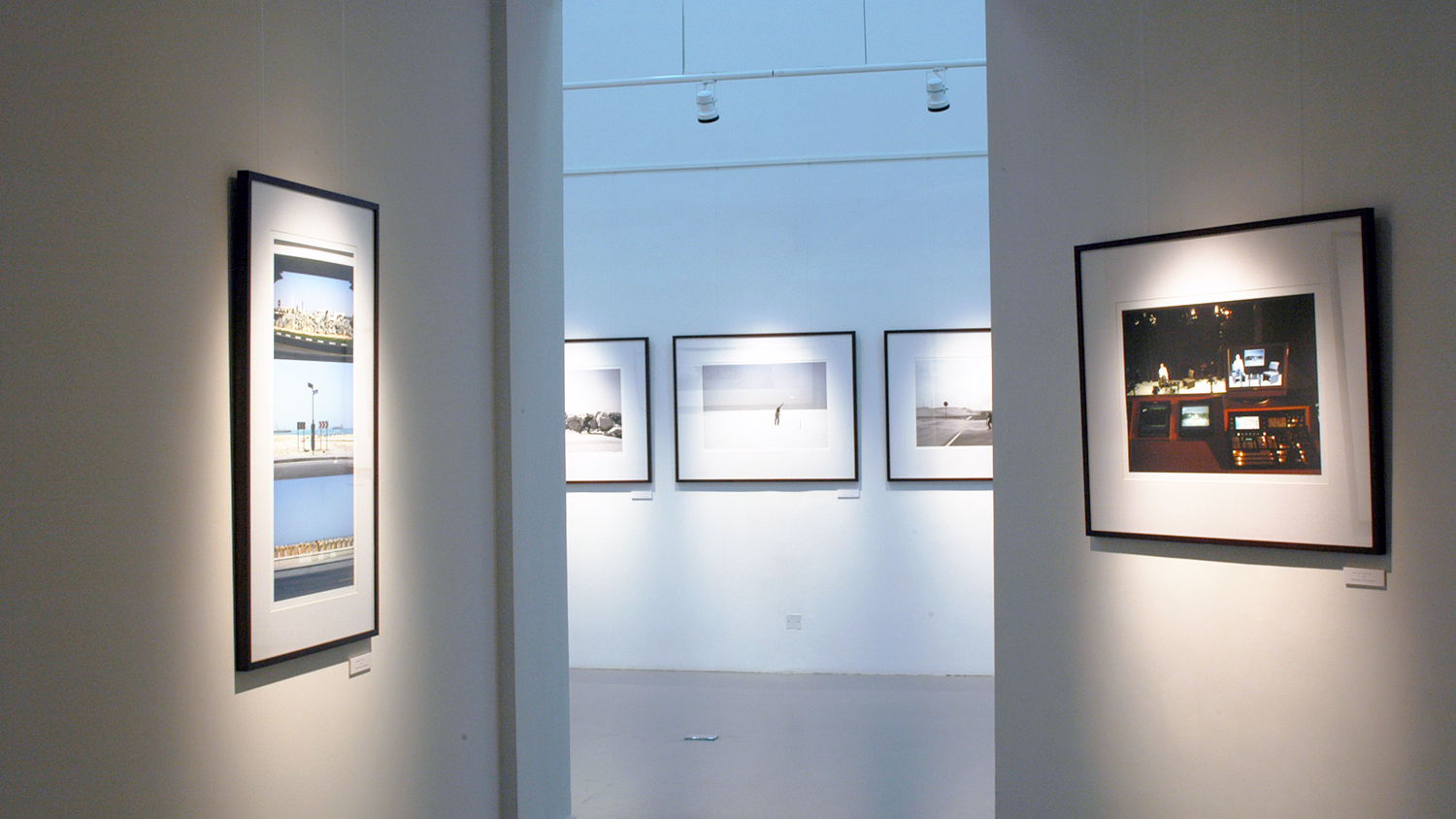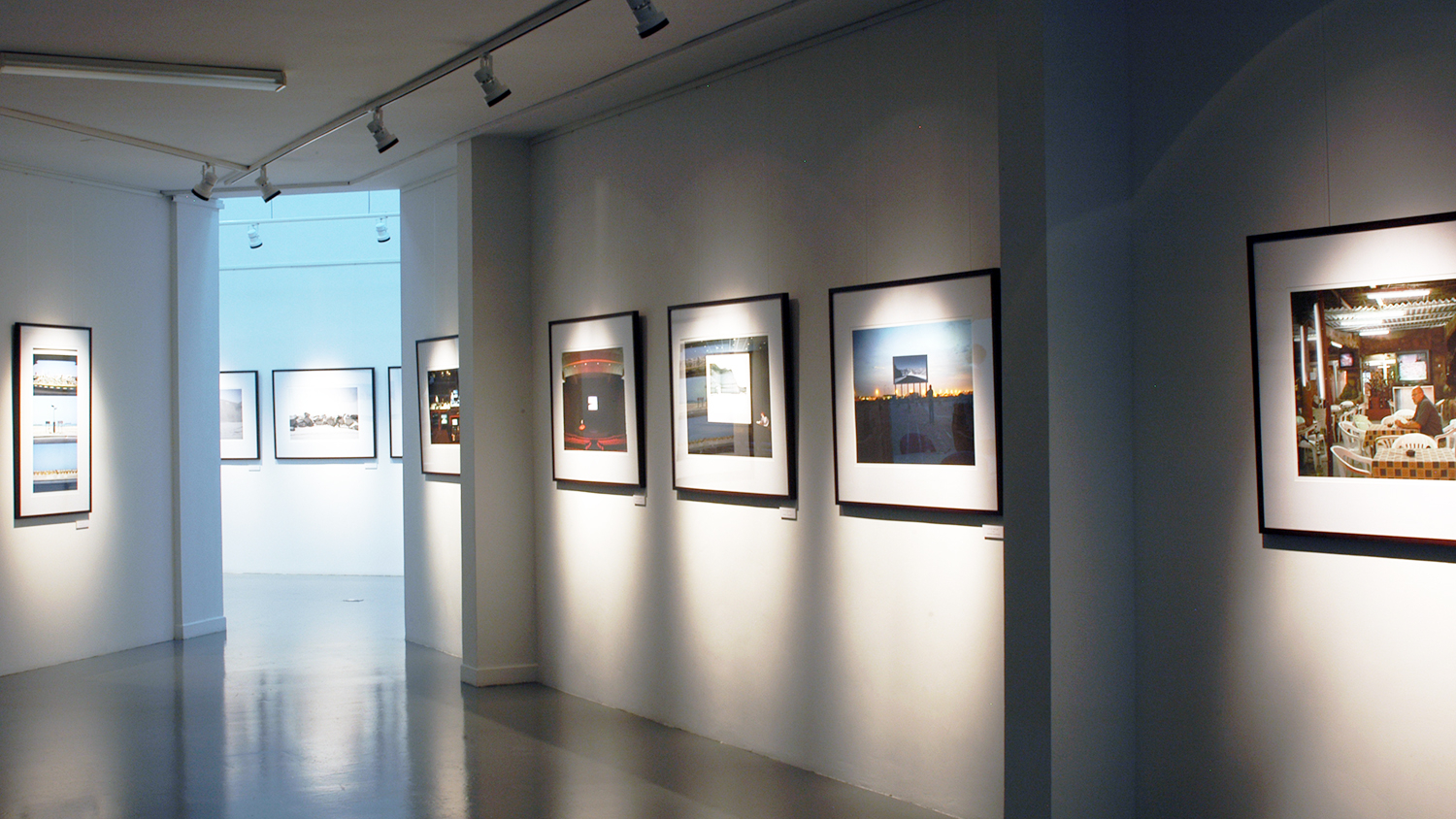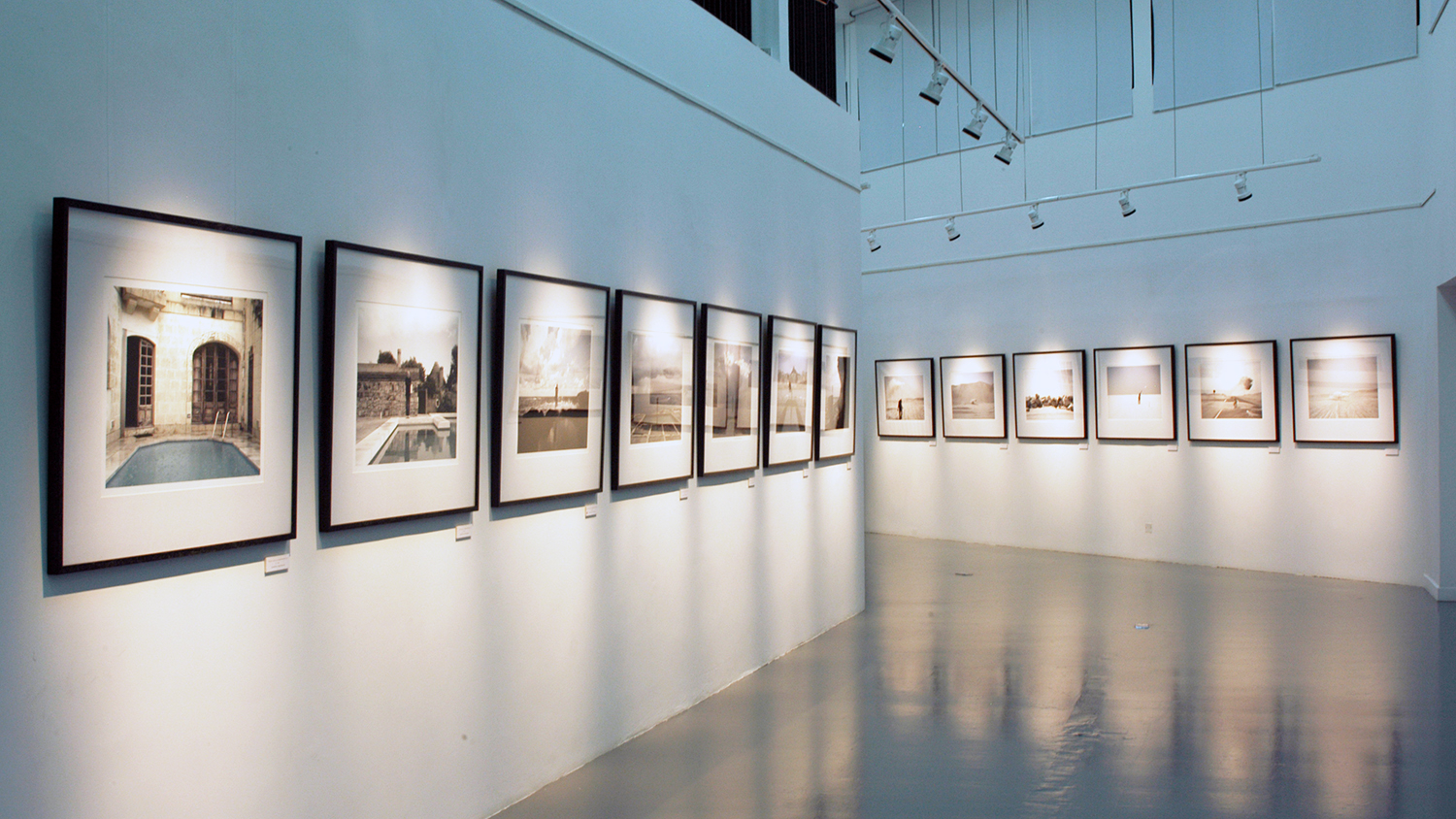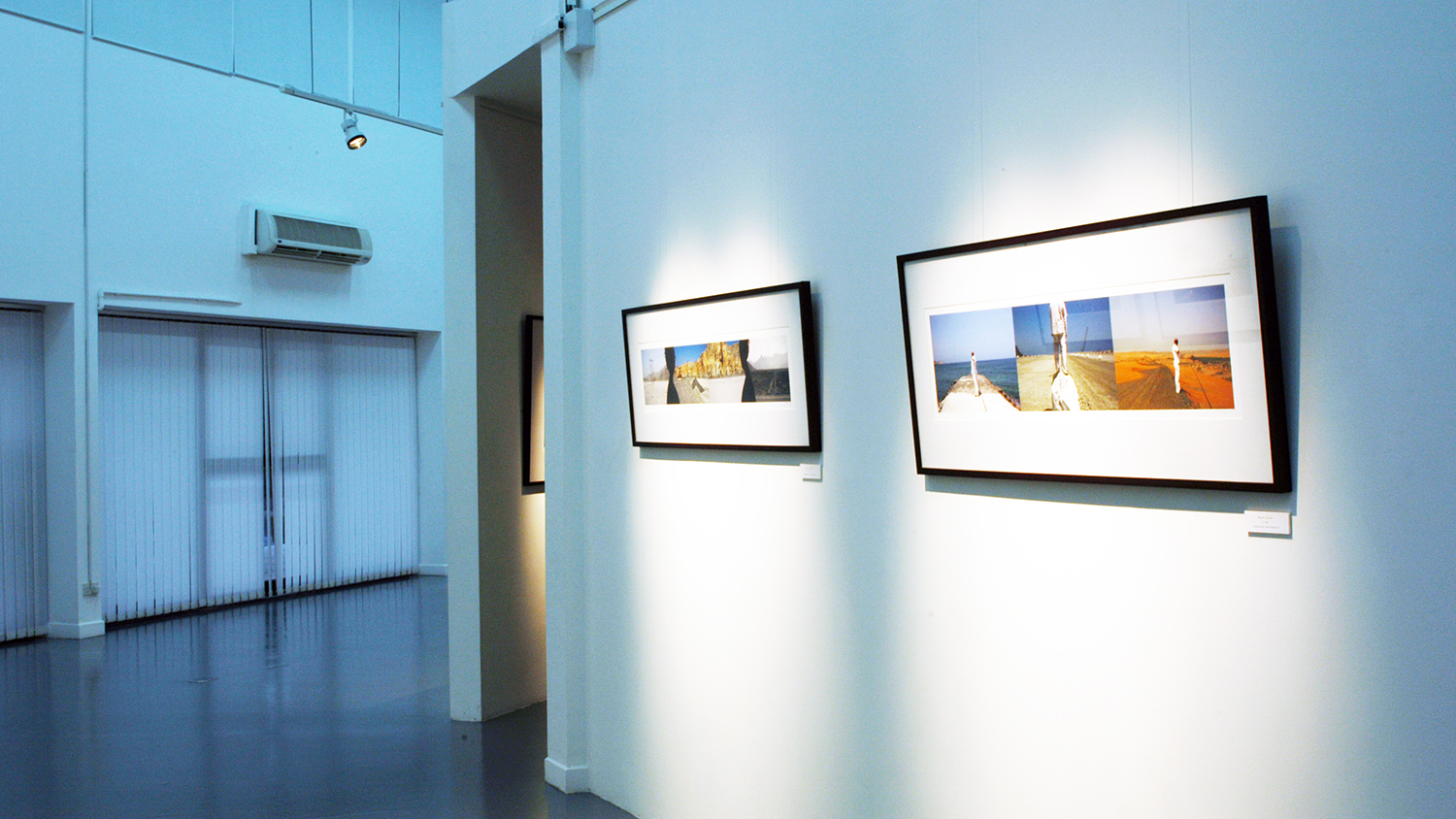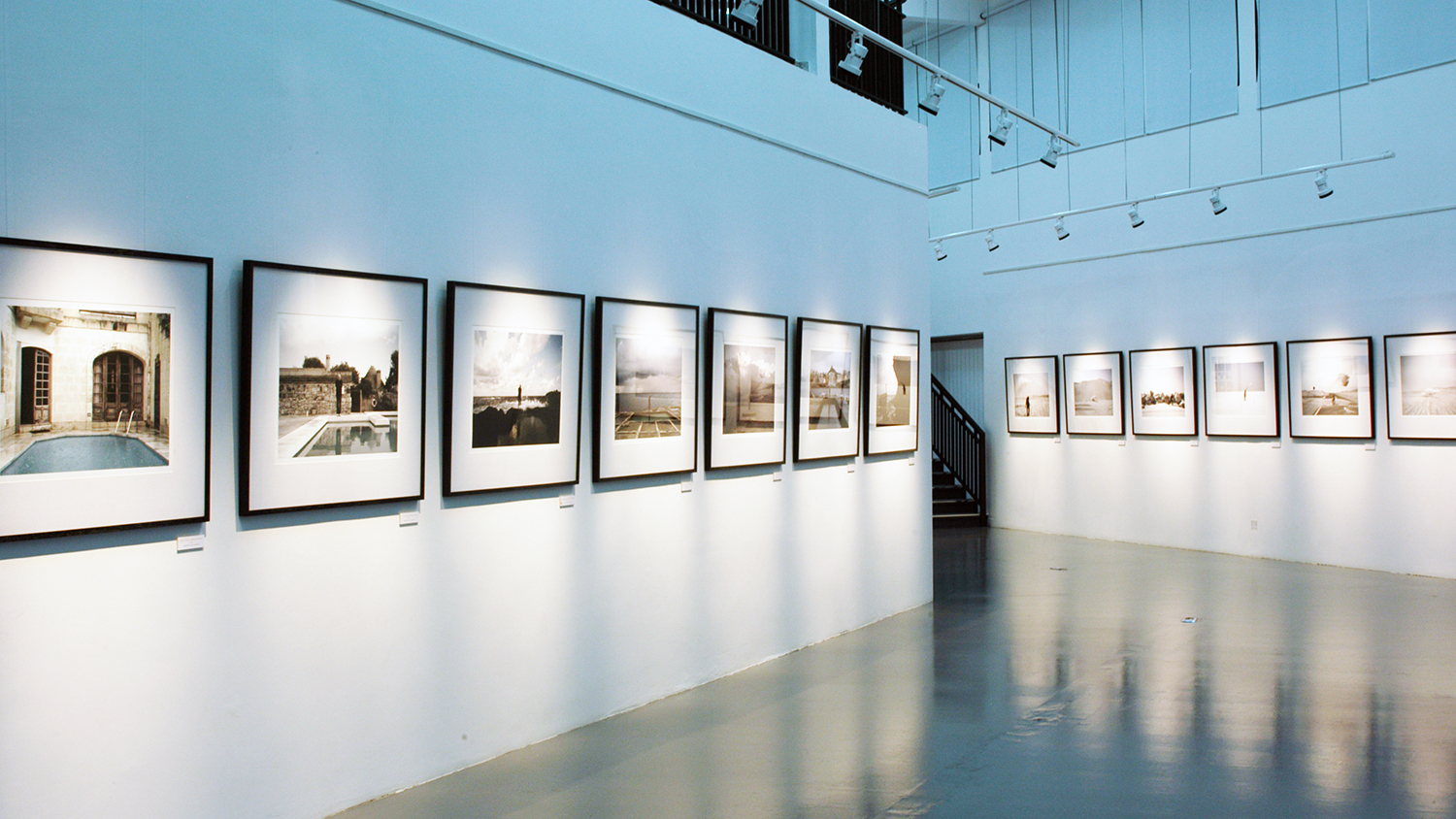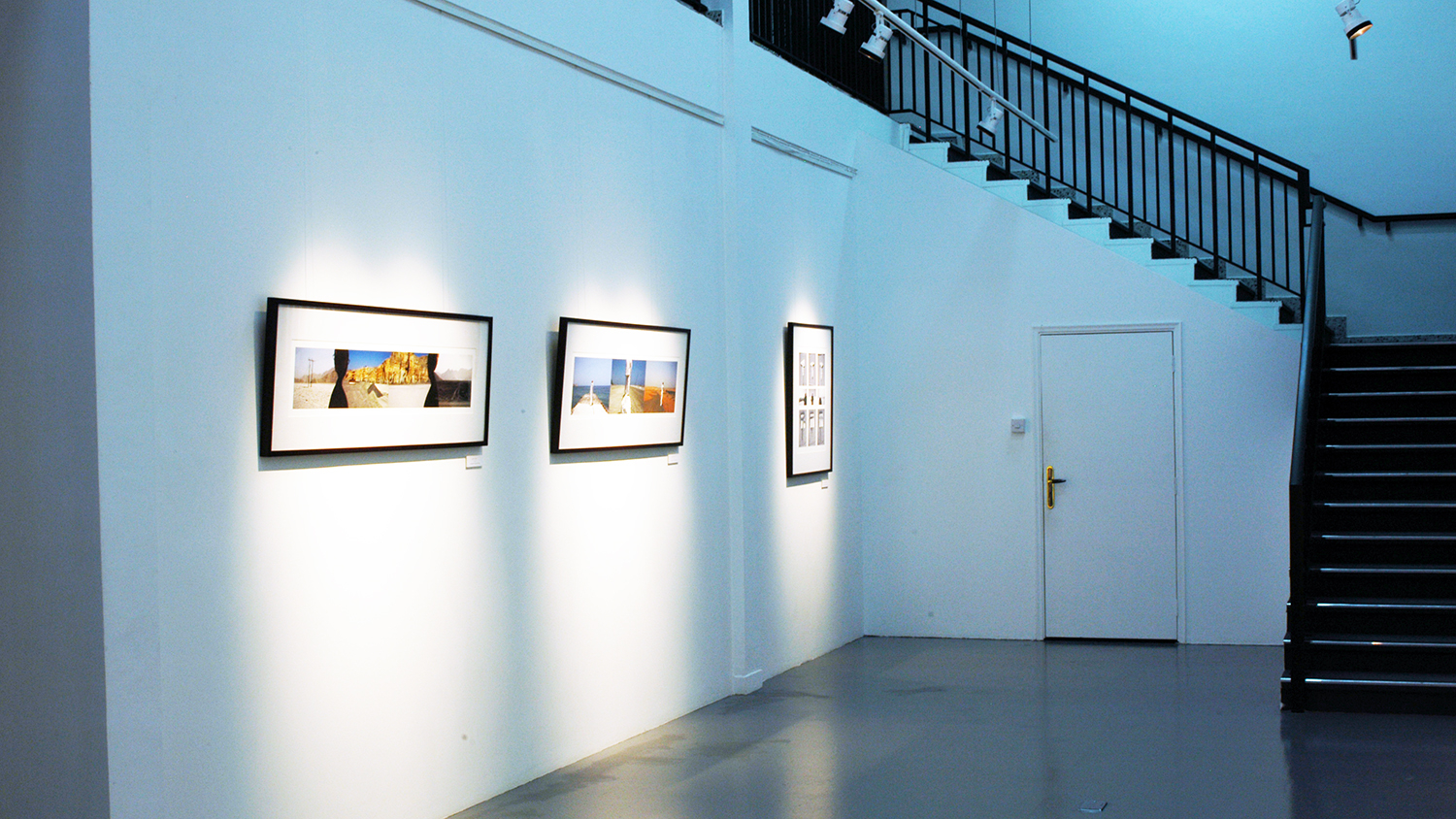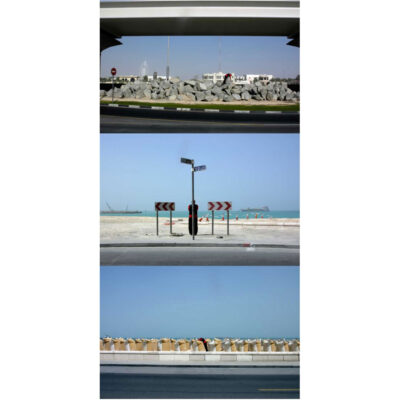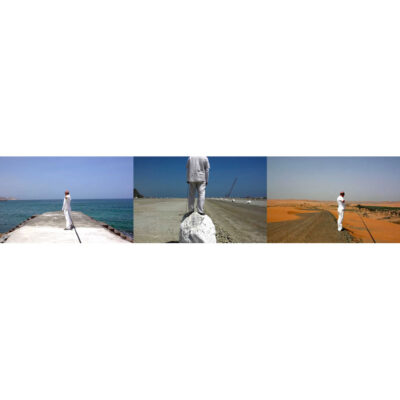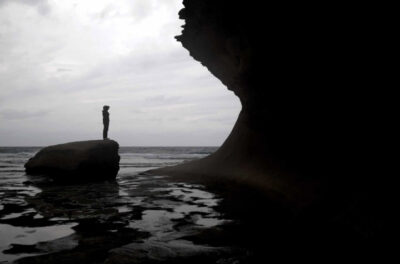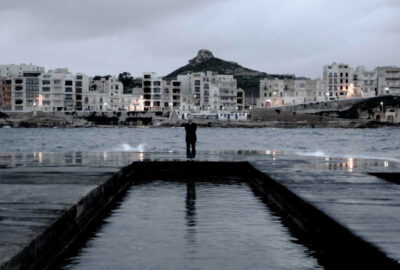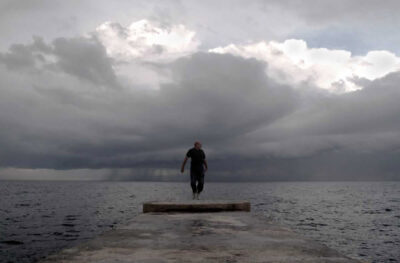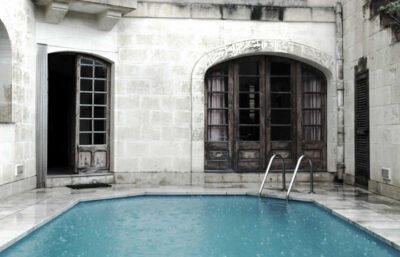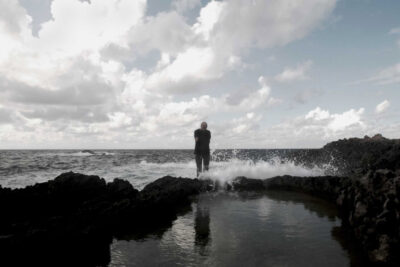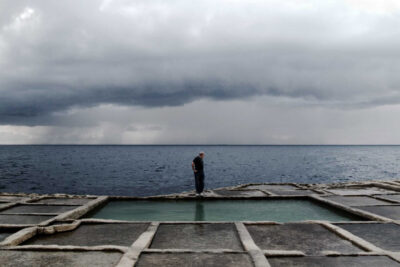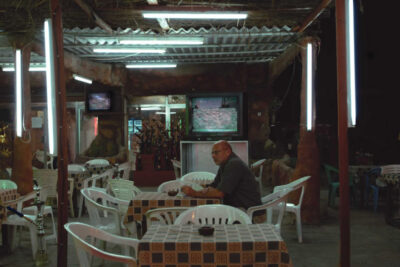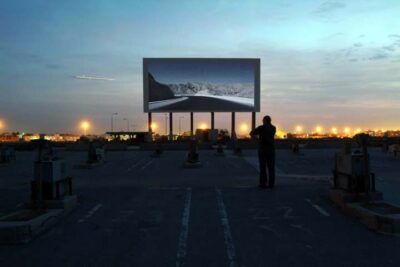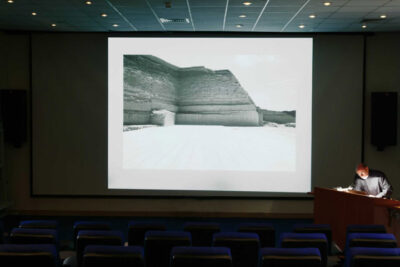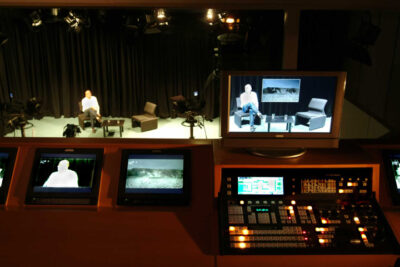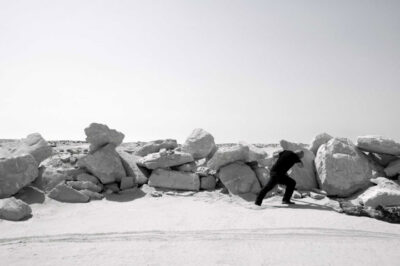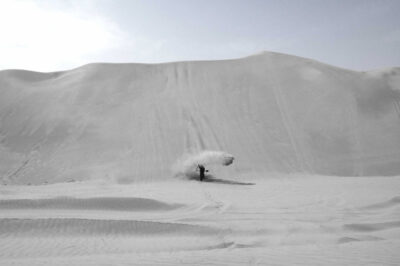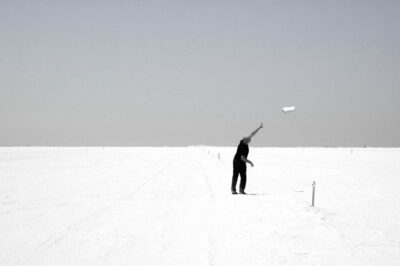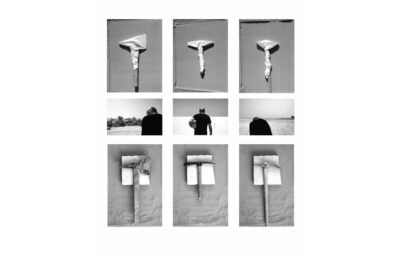A long time ago I made this photograph in New York. I was staying in a loft and each evening when I returned I would look across to a neighbor’s window, to an artist’s studio. He/she was working on a life sized photo realist drawing - a woman dressed in a frock dancing, as far as I was concerned. Whilst I never saw or met the artist, each evening there was evidence that the work was being developed. There is something voyeuristic in the photograph, something of an intrusion into a private moment observed, something romantic yet, on the other hand, there is something about distance and silence that still draws me to this image. Some of its theme is present in islander - there are edges, boundaries a performance and interaction.
There is in my work a silence that has been commented upon and is present in ‘dance’. The music for the dancer is not heard from my vantage position, separated as I am by windows and distance. For me, it is a similar silence to that I heard when I first saw Piero della Francesca’s frescoes in Arezzo – the Renaissance composition and division of the space both stabilizes and at the same time mutes the sound; the postures of the figures depicted are formal, posed. The portraits of Bill Brant have a similar quality, for me. It is not like the decisive moments of Henri Cartier-Bresson, where in the continuum of time he has frozen that key moment – those photographs are loud, I hear the sounds of before and after. Similarly, in Robert Frank’s work I hear the noise of engagement that resonates from the moment. In Diane Arbus portraits where the environment plays an essential role in the reading of the image, I hear a loud silence - that of the moment just before the shutter is released. It is a silence also filled with ambient sound, the buzz of electricity, the street noise. My work is not about decisive moments in photographic terms, more a pause in a drama, if not a still from a film, or that moment when the television screen freezes or a video is paused.
The photographs have been constructed, to some extent they are directed. The narrative in my work can be imagined. The longer you accept the freeze frame, the more moments there are possible, imaginable, and progressively the narrative that the image was a part of becomes more distant, less relevant, rather it becomes a thing in itself, a moment that is less decisive. The frozen film frame is devoid of its sound track, its context has been removed, it has become silent.
Recently I have returned to the films made by Michelangelo Antonioni in the 70s that I first saw as a student. I am struck by his composition both in terms of time and space. His films evoke something more than a description of a narrative story line - there are moments lingered upon, beautifully composed, that provide an opportunity for the viewers to invent their own reading of the scene. They are potential stories within stories, singular moments that form a collage of experience that, in a surreal way, make sense. There are scenes where little or nothing actually happens, where only the sound track of ambient noise fills the space and time experience. The moment is lingered upon; possibilities are offered for the viewer; what could happen is presented. I once wrote the following in reference to ‘photographs from an island’, where perhaps there is an element of the narrative, an Antonioni linger:
It rained and the swimming pool eventually overflowed. the definition of the pools edge became more mysterious and less defined by the addition of each raindrop. finding other edges on the island was an adventure and during this adventure I was reminded of a folk tale I had read many years ago. the tale describes a shipwreck in rough winter seas. only one person managed to survive drowning by climbing onto a small rock. even so they were constantly dashed by the waves. villagers from the main land could only witness the event from the cliff top however they were helpless given they could not reach the rock and attempt a rescue in such atrocious conditions. the storm continued for days and nights. the villagers became daily observers of the unfolding drama. the person on the rock progressively lost strength in their battle to stay above the water eventually the inevitable happened and the sea took the person back.’
In some ways this tale refers to ‘what could happen’, but there is the plight of the individual that interests me. In the tale there is a tragic end in as much as rescue could not take place. However, imagine what the onlookers learnt about their own lives and mortality, imagine the silences, imagine or believe in ‘inshallah’. There is also something in the tale about distance that interests me. I am both at a distance to the camera and behind the camera in my work; I am both the villager and the shipwrecked.
The Mediterranean island of Gozo, where ‘photographs from an island’ were made, has been described as the home of the sea nymph and daughter of Atlas, Calypso. When Odysseus was washed ashore as the only survivor of a shipwreck, she fell in love with him and offered him immortality if only he would stay with her. While he wanted to return to his wife and home, Calypso refused and held him captive for seven years before Zeus sent Hermes to order his release. Reluctantly, Calypso agreed and Odysseus left for home, leaving Calypso to die in grief. Now we have distance and time as well as notions of free will and captivity as elements of alienation. There are elements of such concepts in islander. There is also an element of self-portraiture, but this is less important than the ‘stage set’ and ‘performance’ that is being made photographic.
There is something unknown that I am trying to work in making my photographs. I pre-visualize the thought rather than the photograph. The results are not intended to illustrate or necessarily be a narrative construct, rather to be a series of stills that hang together with a degree of intention. Then I can listen to the frozen frames. As such, this exhibition and catalogue is a part of that listening process.
مشاركة هذه الصفحة:
نبذة عن الفنان
درس مارك بيلكينجتون الفنون الجميلة وحصل على شهادة الماجستير في التصوير الفوتوغرافي في الكلية الملكية للفنون في لندن. قام بتدريس التصوير الفوتوغرافي في عدد من الكليات البريطانية قبل أن ينتقل إلى الإمارات عام 1997. يعمل الفنان كمدرس بدوام كامل في كلية العمارة والفنون والتصميم، الجامعة الأمريكية في الشارقة، حيث يدرّس كلاً من التصوير الفوتوغرافي العملي وتاريخه. عرض مارك أعماله في ا...

